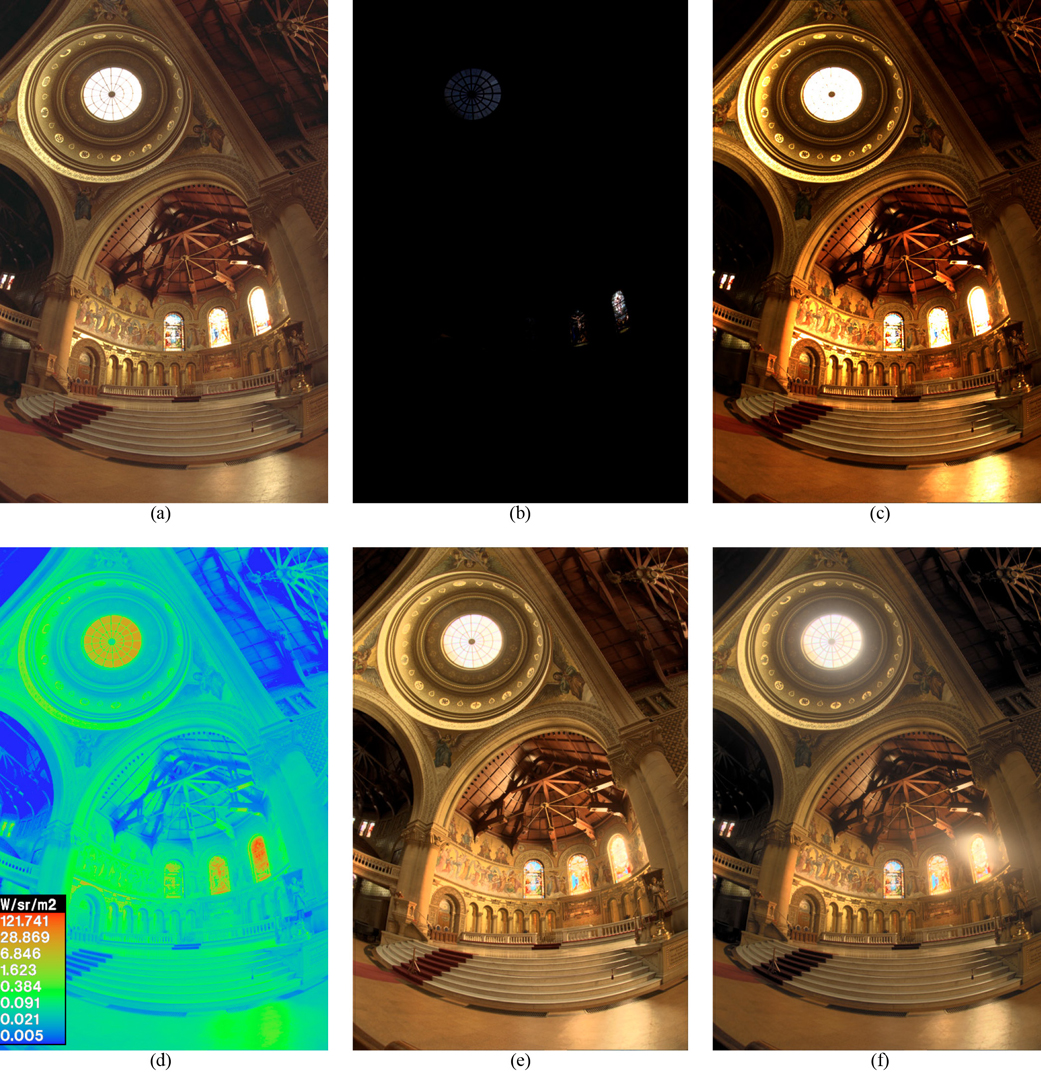“Recovering high dynamic range radiance maps from photographs” by Debevec and Malik
Conference:
Type(s):
Title:
- Recovering high dynamic range radiance maps from photographs
Presenter(s)/Author(s):
Abstract:
We present a method of recovering high dynamic range radiance maps from photographs taken with conventional imaging equipment. In our method, multiple photographs of the scene are taken with different amounts of exposure. Our algorithm uses these differently exposed photographs to recover the response function of the imaging process, up to factor of scale, using the assumption of reciprocity. With the known response function, the algorithm can fuse the multiple photographs into a single, high dynamic range radiance map whose pixel values are proportional to the true radiance values in the scene. We demonstrate our method on images acquired with both photochemical and digital imaging processes. We discuss how this work is applicable in many areas of computer graphics involving digitized photographs, including image-based modeling, image compositing, and image processing. Lastly, we demonstrate a few applications of having high dynamic range radiance maps, such as synthesizing realistic motion blur and simulating the response of the human visual system.
References:
1. ADAMS, A. Basic Photo, 1st ed. Morgan & Morgan, Hastings-on-Hudson, New York, 1970.
2. CHEN, E. QuickTime VR – an image-based approach to virtual environment navigation. In SIGGRAPH’ 95 (1995).
3. DEBEVEC, P. E., TAYLOR, C. J., AND MALIK, J. Modeling and rendering architecture from photographs: A hybrid geometry- and image-based approach. In SIGGRAPH ’96 (August 1996), pp. 11-20.
4. FAUGERAS, O. Three-Dimensional Computer Vision. MIT Press, 1993.
5. FERWERDA, J. A., PATTANAIK, S. N., SHIRLEY, P., AND GREENBERG, D. P. A model of visual adaptation for realistic image synthesis. In SIGGRAPH ’96 (1996), pp. 249-258.
6. GORTLER, S. J., GRZESZCZUK, R., SZELISKI, R., AND CO- HEN, M.F. The Lumigraph. In SIGGRAPH ’96 (1996), pp. 43-54.
7. HORN, B. K. P. Robot Vision. MIT Press, Cambridge, Mass., 1986, ch. 10, pp. 206-208.
8. JAMES, T., Ed. The Theory of the Photographic Process. Macmillan, New York, 1977.
9. KAUFMAN, J. E., Ed. IES Lighting Handbook; the standard lighting guide, 7th ed. Illuminating Engineering Society, New York, 1987, p. 24.
10. KOLB, C., MITCHELL, D., AND HANRAHAN, P. A realistic camera model for computer graphics. In SIGGRAPH ’95 (1995).
11. LAVEAU, S., AND FAUGERAS, O. 3-D scene representation as a collection of images. In Proceedings of 12th International Conference on Pattern Recognition (1994), vol. 1, pp. 689- 691.
12. LEVOY, M., AND HANRAHAN, P. Light field rendering. In SIGGRAPH ’96 (1996), pp. 31-42.
13. MADDEN, B. C. Extended intensity range imaging. Tech. rep., GRASP Laboratory, University of Pennsylvania, 1993.
14. MANN, S., AND PICARD, R. W. Being ‘undigital’ with digital cameras: Extending dynamic range by combining differently exposed pictures. In Proceedings of IS&T 46th annual conference (May 1995), pp. 422-428.
15. MCMILLAN, L., AND BISHOP, G. Plenoptic Modeling: An image-based rendering system. In SIGGRAPH’ 95 (1995).
16. SCHLICK, C. Quantization techniques for visualization of high dynamic range pictures. In Fifth Eurographics Workshop on Rendering (Darmstadt, Germany) (June 1994), pp. 7-18.
17. SZELISKI, R. Image mosaicing for tele-reality applications. In IEEE Computer Graphics and Applications (1996).
18. TANI, T. Photographic sensitivity : theory and mechanisms. Oxford University Press, New York, 1995.
19. THEUWISSEN, A. J.P. Solid-state imaging with chargecoupled devices. Kluwer Academic Publishers, Dordrecht; Boston, 1995.
20. TUMBLIN, J., AND RUSHMEIER, H. Tone reproduction for realistic images. IEEE Computer Graphics and Applications 13, 6 (1993), 42-48.
21. WARD, G. J. Measuring and modeling anisotropic reflection. In SIGGRAPH ’92 (July 1992), pp. 265-272.
22. WARD, G. J. The radiance lighting simulation and rendering system. In SIGGRAPH ’94 (July 1994), pp. 459-472.
23. WARD, G. J., RUSHMEIER, H., AND PIATKO, C. A visibility matching tone reproduction operator for high dynamic range scenes. Tech. Rep. LBNL-39882, Lawrence Berkeley National Laboratory, March 1997.





